In popular culture, when someone says “zen,” it usually means “calm.” As in, “I had a zen day at the spa.” But what does it really mean?
Zen is a type of Buddhism, but it’s not exactly a religion, philosophy, or psychology. Zen is more like a view of life and a way of liberation. Liberation from what, exactly? Socially conventional ways of thinking.
Ideas from eastern philosophies played a big role in the hippie counterculture of the 1960’s. Today those ideas and practices have gone mainstream, and it feels like almost everyone has at least tried some yoga, mindfulness or meditation. But we should remember that when Alan Watts wrote this book it was 1957, so he was one of the first popular teachers explaining eastern ideas to western audiences.
In the introduction to The Way of Zen, Watts says he was not creating any demand but simply filling it. Young, western people were disengaged with their parent’s traditions, so they turned to practices from other cultures that may offer some guidance for living. I don’t think much has changed today. (Plus, back in the 60’s, it probably felt more safe to meditate than to try what Timothy Leary or Terrence McKenna were preaching!)
I’ll add one more thing: Steve Jobs, the charismatic founder of Apple, was a lifelong practitioner of Soto Zen. It strongly influenced his design philosophy at Apple, where simpler was always more beautiful. Read more in our summary of his official biography.
About the author
Alan Watts (AlanWatts.org) was born in 1915 in England, but to study Zen he moved to America, where he lived most of his life. He was an Episcopal priest for 5 years, then became an author on Buddhist, Taoist and Hindu philosophy. To get away from crowds and have more time for writing, he lived on a houseboat, then in a cabin on a mountain. Today he continues to be very popular—many Youtube videos that feature his voice hit millions of views.
☯️ 1. Zen is Taoism: The ancient Chinese philosophy that values spontaneous intuition over intellect
Typically, we think of Zen Buddhism as being, well, Buddhist. It’s right there in the name! But there was another, older philosophy that was equally strong in shaping Zen, and that was Taoism. (Britannica.com)
Around 500 BC, ancient Chinese culture had two schools of thinking that were almost opposite:
- Confucianism. This was a practical philosophy from a thinker named Confucius, which focused on how to create a more harmonious society through stronger social conventions, moral duties, and political systems.
- Taoism. This was a way of liberation from social convention, and it came from Lao Tzu, who wrote the book Tao Te Ching. It focuses on the power of acting in a way that is natural, spontaneous, and unforced.
One of my favorite quotes from the Tao Te Ching is: “Be content with what you have; rejoice in the way things are. When you realize there is nothing lacking, the whole world belongs to you.”
Alan Watts spends a chapter explaining the big concepts of Taoism, which include:
- The Tao, which can be translated as “The Way.” It’s the nameless, mysterious power beneath every thing in the universe, that nourishes and grows all things. However, it’s not like God in the western way of thinking, because it doesn’t create or control everything. It’s very tricky describe what the Tao is in words, because as the Tao Te Ching says, “The Tao that can be spoken of is not the real Tao.” It’s concrete reality outside of our words, definitions, and abstract concepts.
- Wu-wei, translated as “non-action,” or not forcing, straining or striving. This does not mean sitting on the couch motionless all day, but allowing our natural intuition to dictate our actions, rather than “getting in our own way” with too much conscious control.
- Wu-shin, translated as “no-mind.” It doesn’t mean someone’s mind is totally blank, but that they are experiencing the world through a more direct intelligence. For example, a writer would need to work forever to write down every detail of the clouds in the sky, but our eyes can take one look up and we take it all in instantly.
Let’s explore that last idea more, because it may be the strongest influence that Taoism had on Zen…
Conventional knowledge is what we are taught in school, using symbols, labels, abstractions and linear sentences. It involves dividing the world into artificial parts, each part with its own label, then trying to find ways to control and predict those parts. Most western people have been taught that only this intellectual knowledge is real. But what Taoism is saying is we can access another powerful type of intelligence or way of knowing that is immediate, concrete, intuitive, non-linear, and beyond names.
Zen is as much from Taoism as Buddhism. Taoism is an ancient Chinese philosophy, started by Lao Tzu with his book Tao Te Ching. It emphasizes naturalness and spontaneous action, guided by our greater intelligence of intuition. This is outside of conventional knowledge—outside thinking with words, symbols, and labels.
💭 2. Escape Social Convention: Zen starts with disillusionment of typical goals, leaving a wonderful emptiness
Many people like Alan Watts because his message appears to be very countercultural. It goes in the opposite way of the values of modern Western society that makes many people so unhappy. So here’s where we begin to dip into these ideas…
Just like Taoism, Zen is so tricky to explain because it is really outside of conventional knowledge. It cannot be explained in words, although words may help point us in the right direction. As a well-known Zen saying goes, “The finger pointing towards the moon is not the moon.” The teachings are only a tool to help us get to a destination, they are not the real point.
Zen teachers have tried to overcome this problem by describing what Zen is not, rather than what it is. They begin with clearing our illusions that come from social convention. Illusions that shape our goals, efforts, and therefore our lives.
In The Way of Zen, Alan Watts talks about 3 main illusions we all live by:
- We can have good without bad. Life is all about moving towards a life filled with fewer unpleasant experiences and more good ones, right? So if we hate our jobs, then we make a plan to get another one, finish a degree, start a business, etc. Yet Watts points out that when one bad thing disappears from our lives, then always another contrast becomes apparent to us, another problem to solve. In the end, good without bad is impossible, because under the surface they are two sides of the same coin.
- We can enhance our self. Our abstract idea of who we are often feels more real than our breathing, living self. This idea is sometimes called “the ego,” like “I work in this profession, I graduated from this school, and I drive this type of car.” Yet Watts explains there is only a false, fuzzy difference between “me” and what is outside of “me,” so this is also an illusion. This is made clear by looking at your breathing, which is sometimes voluntary (done by you) and sometimes involuntary (done without your control… so who does it?)
- We can strive for a promising future. The future is probably the greatest illusion of all. In reality, the only time that can be said to really exist is the present moment. The future is an imaginary mental projection that exists in your head and my head. When the future comes, it will always come as the present. The secret is to learn how to live completely in the present moment now, which is the only place we can ever live.
Where does that leave us? At a point where there is no more to seek, no more to gain, no point to self-improvement. (Alan Watts strongly emphasizes the point that Zen is NOT self-improvement.) And that is the first door to Zen: a state of pointlessness, aimlessness, and emptiness.
If that sounds depressing… well, it shouldn’t. Watts describes this kind of aimlessness not as misery, but like a wandering mountain stream. The Buddha himself said he attained “not the least thing” from awakening. I think that means awakening was more a process of subtraction, than addition. Subtracting our illusions and social brainwashing, so we are left with who we really are.
One of the most popular self help authors of the last 10 years was Mark Manson. In his mega-bestselling book, he wrote, “The desire for more positive experience is itself a negative experience. And, paradoxically, the acceptance of one’s negative experience is itself a positive experience.”
Basically, that means when we having a strong purpose to “be happy” all the time, that can ironically make us feel more miserable. But when we are okay with feeling bad, then we are no longer adding suffering on top of suffering.
Read more in our summary of The Subtle Art of Not Giving A F*** by Mark Manson
Like Taoism, Zen can’t really be described in positive terms. So learning Zen begins with clearing our illusions, that come from social convention. Illusions like: happiness lies in a promising future and an improved reputation. In the end, we’re left with a marvellous emptiness.
🌳 3. Buddha’s Awakening: Around 500 BC, Siddhartha Gautama awakened under a tree and began teaching others how to end suffering
If we want to understand Zen, then we must understand Buddhism. And if we want to understand Buddhism, then we should begin with understanding some basics of Hinduism, because the Buddha lived within that spiritual tradition. And that is why a book called “The Way of Zen” talks for many pages about Hindu words and ideas.
Here are a few ideas central to Hinduism:
- Brahman – Ultimate Reality.
- Atman – Universal Self.
- Maya – The illusion of the world.
- Samsara – The endless cycle of rebirth that all life follows.
- Moksha – Liberation from that cycle and awakening from the illusion, which also means identification with Brahman and Atman.
The Buddha was born as Siddhartha Gautama and he lived around 500 BC. He was a wealthy prince who lived a very sheltered life. Then one day, for the first time Siddhartha saw sickness, old age, and death. So he renounced his nobility, became an ascetic monk, and followed the Hindu traditions of his time and place.
After 7 years of struggling with the strict spiritual disciplines, one day he decided to “give up” and follow a “Middle Way” between the extremes of deprivation and indulgence. Then he sat under a Bo tree and experienced awakening—also called moksha or nirvana. That’s when he became “The Buddha,” a name which really means “The Awakened One.” Soon, he began teaching others how to reach nirvana, too.
Alan Watts calls the Buddha’s inner experience “the essential content” of his teaching, which is passed on generation after generation. The doctrine is secondary because the experience can never be captured in words, which are part of the net of illusion (maya).
The Four Noble Truths are often seen as the first teaching of the Buddha:
- Life is suffering. (dukha) This could better be called frustration or bitterness, the ordinary and unavoidable nature of our existence. We get sick, old, lose loved ones, and die.
- The cause of suffering, which is our craving, clinging or grasping. (This is called trishna—a word that is connected to the English word “thirst.”) Another way to look at it is: Being caught up in illusion (maya) causes our grasping, which creates the endless cycle of rebirth (samsara).
- The end of suffering. When we let go of our grasping, then we reach the state of nirvana, sometimes translated as a “blowing out” of our self. Here Alan Watts paraphrases one of Jesus’s famous sayings that “whoever loses one’s life will find it.”
- The path to ending suffering. This is Buddha’s Noble Eightfold Path, which includes right view, right speech, right action, right mindfulness, etc. It involves seeing the world as it is and refraining from actions that cause more grasping. Often represented visually as a wheel with eight spokes, a symbol called the dharmachakra.
Alan Watts makes a very interesting point about the cycle of rebirth. While many modern Buddhists do believe in beings literally being reincarnated, there are some Buddhist schools, including Zen, that interpret the idea more figuratively. It is our ego, our abstract idea of ourselves, that is being reincarnated again and again every moment, as long as we identify with it. In fact, one of the main differences between Buddhism and Hinduism is the belief in no permanent self.
One of the most loved modern teachers of Buddhism is the Vietnamese monk Thich Nhat Hanh. In one of his books explaining the core ideas of the Buddha, he wrote, “The Buddha called suffering a Holy Truth, because our suffering has the capacity of showing us the path to liberation. Embrace your suffering, and let it reveal to you the way to peace.” That also means, the Buddha was a human who suffered like you and me. And it’s because of that common experience that we can enter into the heart of the Buddha.
Read more in our summary of The Heart of the Buddha’s Teachings by Thich Nhat Hanh
Buddha lived around 500 BC. He was born a wealthy prince, but became a poor monk. He followed Hindu spiritual disciplines and teachings like moksha, samsara and maya. After he became awakened, his own teachings started with the Four Noble Truths: 1. There is suffering, 2. grasping causes it, 3. the end of suffering is letting go of grasping, 4. and the Noble Eightfold Path to ending suffering.
🇮🇳 4. The Growth of Zen: Indian Mahayana Buddhism came to China and combined with Taoism
So when and how did Zen Buddhism begin?
First, you need to know there are two main schools of Buddhism:
- Theravada Buddhism. Based on earlier scriptures written around 250 BC in Pali, an ancient Indian language. Today it’s followed mostly in Southeast Asia, especially in Thailand, Myanmar and Sri Lanka. “Theravada” means “teachings of the elders.”
- Mahayana Buddhism. Based on later scriptures written after 100 BC in Sanskrit, a different ancient Indian language. Today it’s followed in China, Japan and Korea. “Mahayana” means “great vehicle” of liberation, as this school contains a great many different methods (upaya) for reaching nirvana. Alan Watts shares a rough analogy: Theravada may open a door through sheer effort, while Mahayana would jiggle the key until the door slides open.
Zen Buddhism is an offshoot of Mahayana. There are actually two different types of beginnings shared in The Way of Zen:
- The Traditional Beginning. Zen tradition says that in 520 AD an Indian monk named Bodhidharma came to China to visit Emperor Wu of Liang. But the Emperor found his answers to Buddhist questions unsatisfactory, so he became a hermit “staring at a wall” for 7 years. Then a disciple named Hui-k’o arrived at his cave seeking spiritual answers, and Bodhidharma began the school of Zen (in Chinese called Ch’an). Although some historians cast doubt on this story, Alan Watts says “we may as well accept” it’s true until there’s definitive proof of the opposite.
- The Historical Beginning. Academics say that in 400 AD an Indian scholar-monk named Kumarajiva brought over the major Mahayana texts to China and translated them. His students Seng-Chao and Tao-Sheng began writing doctrines and commentaries, and since they were very familiar with Taoism, the Zen/Ch’an school began to overlap with ideas from Taoism.
What makes Zen different from other types of Buddhism? It’s not really about having teachings that are unique, says Alan Watts, but rather
Zen is different from other forms of Buddhism because of its unique “flavour,” according to Alan Watts. Other kinds of Buddhism give an impression that awakening happens after extraordinary effort and dedication.
In Zen Buddhism, awakening feels direct and immediate, like it can happen any instant. In this way, it reflects the unforced spontaneity of Taoism.
After the beginning, the Zen school slowly grew in popularity. Around 700-900 AD, during the late Ta’ang Dynasty, it became the dominant form of Buddhism in China. Around 1200 AD, it was brought over to Japan by traveling monks. Then in the 1600’s Zen in China slowly merged into the popular Pure Land Buddhism.
Meanwhile, over the hundreds of years, there was a long line of Zen Patriarchs. Alan Watts mentions too many names and details for me to fit into this short summary, but there was Seng-ts’an, Tao-Hsin, Hung-jan, and Hui-neng. They gradually gave Zen more of its unique flavour, combining Buddhism and Taoism. After Hui-neng, Zen split into many branches.
Two of those branches grew into the two main schools of Zen in Japan today:
- Rinzai Zen. Uses a koan system of tests to check whether a monk has attained a certain level of spiritual insight. If they pass the tests, they earn greater authority in the temple. A koan is like a riddle, based on an answer given by a classic Zen master. Koans are designed to create great doubt in the student, until the answer is suddenly realized by spontaneous intuition. An example of a koan from Hui-neng: “Find your original face (Wikipedia) before your father and mother were conceived.”
- Soto Zen. This school felt the koan system was the wrong approach, too artificial. Instead, they believed the emphasis in Buddhism must be on “motiveless action” like sitting just to sit. The Soto School was introduced to Japan in 1227 by Dogen, whom Alan Watts calls an “extraordinary genius.”
A great quote (Goodreads) that I like from Dogen: “If you are unable to find the truth right where you are, where else do you expect to find it?”
Mahayana Buddhism contains a greater number of techniques than the earlier Theravada. It was brought to China from India around 400 or 500 AD, by either Bodhidharma or Kumarajiva. Zen Buddhism was born as Chinese Buddhist monks added ideas from Taoism, and by 900 AD it had become very popular. In 1200 AD Zen came to Japan, and continues there today with the Rinzai and Soto schools.
🧘 5. Sit Just to Sit: Za-zen meditation is not “practice” and has no purpose
Za-zen literally means “sitting zen,” and the words zen can be traced back to “meditation.” The practice of za-zen, or sitting meditation, is extremely important in modern Zen communities, with monks often sitting many hours each day in meditation.
There are two parts to za-zen:
- The outer posture. Zen buddhists are taught to sit upright yet relaxed, with crossed legs if possible for greater stability. The eyes are focused a few feet ahead on the ground.
- The inner experience. Unlike some other types of meditation you may have heard of, there is no technique. You are supposed to “just sit” without an end in mind, without a purpose, and without thinking. You simply take in everything, and Alan Watts says this creates a “vivid sensation of nondifference” between you and the world.
I think another teacher of Zen can shines some more light on what this means. Shunryu Suzuki wrote the popular classic book “Zen Mind, Beginner’s Mind.” He says beginners to meditation are told to start with concentrating on their breathing. However, this is just an intermediate stage. He wrote, “to concentrate your mind on something is not the true purpose of Zen. The true purpose is to see things as they are, to observe things as they are, and to let everything go as it goes.”
Read more in Zen Mind, Beginner’s Mind by Shunryu Suzuki
In other words, za-zen is not a state where the world goes totally blank. You’re still going to see things and have thoughts, but you don’t hold onto those impressions. You allow everything to enter your mind, pass through, and then leave. Alan Watts labels this “non-graspingness” and it is absolutely a core element of Zen Buddhism.
Za-zen, or sitting meditation, is sitting in a comfortable and upright position. There is no real technique, you simply sit and let all impressions pass by without grasping onto them. Done right, there should be no end in mind while you’re doing it, but za-zen can help you see the world more as it is.
🍵 6. Zen Arts: The flavour of Zen can be seen in its paintings, poetry and tea ceremony
What about when we need to, you know, do things? Well, then we can also take action with a Zen flavour.
Remember Zen follows many Taoist principles, one of which is wu-wei, also called non-action or effortless action. It means acting without hesitation or hurry, with total commitment and ease. How? By “giving up” control and trusting a deeper intelligence to guide our way. Kind of like the quick, spontaneous wit of a good comedian.
The best examples of effortless action come from Zen arts:
- Sumi-e Painting. These are usually nature landscapes, painted with dark ink on white paper. They capture glimpses of ordinary everyday beauty, like a thundering waterfall. They often have lots of white space, yet the emptiness feels like it is somehow part of the painting. But the most unique thing about Sumi-e is how they are painted. The artist’s hand moves loosely over the paper, sometimes adding spontaneous jagged lines rather than perfect shapes, and the whole feeling is of a “controlled accident.”
- Haiku Poetry. Chinese Buddhists had long loved short 2-line poems. Then a famous Zen master named Basho created a new form of 3-line poem, with each line containing 5, 7, and 5 syllables. These poems also tend to be about natural phenomena and have a feeling of stark minimalism. For example, “An old pond; A frog jumps in; The sound of water.” (Basho)
- Cha-no-yu Tea Ceremony. Tea was long used by Buddhist monks as a stimulant for meditation. Over time, a ceremony developed around making tea. This involves making a fire, boiling the water, then whisking powdered green tea leaves into the hot water to make a bright green drink. Again, the most important part is how it is done, with full attention on one’s actions. Alan Watts says it’s about creating a “sense of an infinitely expanded present” where we are not distracted by thoughts of past or future.
Zen action follows the Tao principle of being effortless and spontaneous, without hurry or hesitation. Sumi-e paintings show spontaneous brushwork and appreciation of nature. Haiku poems are incredibly simple, but can provoke vivid mental imagery. The Cha-no-yu tea ceremony is given full attention, which elevates an everyday chore to a timeless moment.
- Sit for 5 minutes, just to sit. This is not a meditation “practice” to increase focus, in fact there is no end goal or purpose. You’re just sitting. If thoughts or feelings come, observe them without getting involved, and let them pass. Will you feel the sensation of “nondifference” that Alan Watts talks about?
- Write down 3 recent dissatisfactions, and how they follow the Buddha’s 4 Noble Truths. Society teaches us that if we just got what we want, then we would be happy. But remember that even a wealthy prince like Gautama couldn’t escape aging, illness and death. So write down how did grasping, clinging or being attached create your dissatisfactions?
- Next time you make tea or coffee, put your full attention into it. This can give us a taste of the tea ceremony experience. Don’t think of anything else. When you’re grinding the coffee beans, just grind the beans. You can transform an everyday chore into a special experience by “expanding the present moment” while you’re doing it.

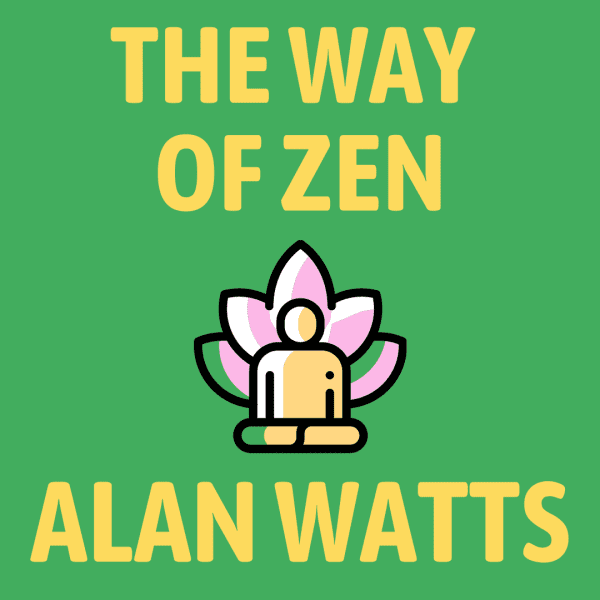

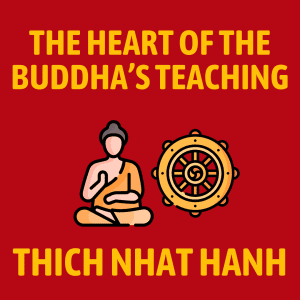
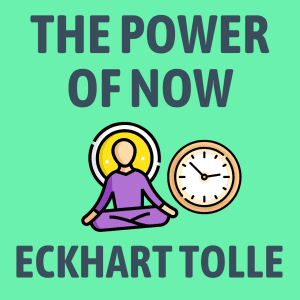
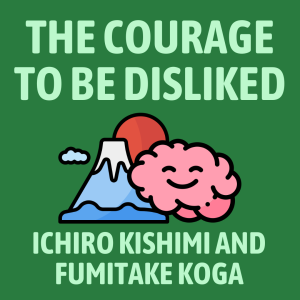
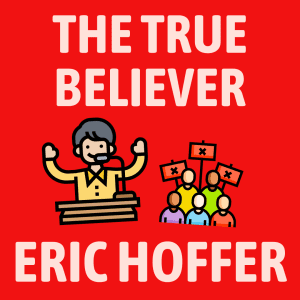

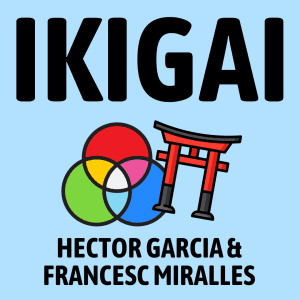


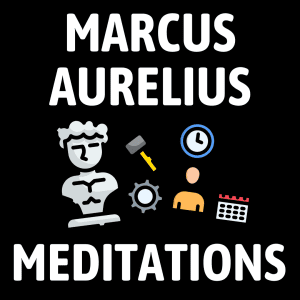

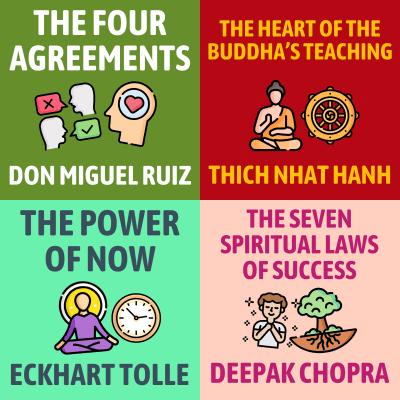














Community Notes